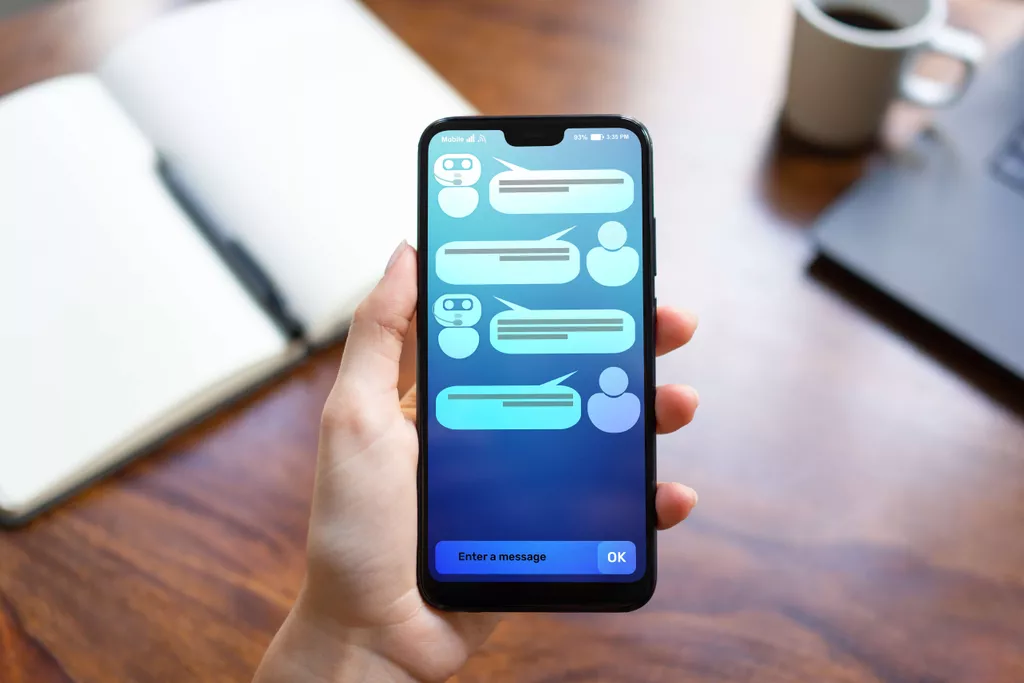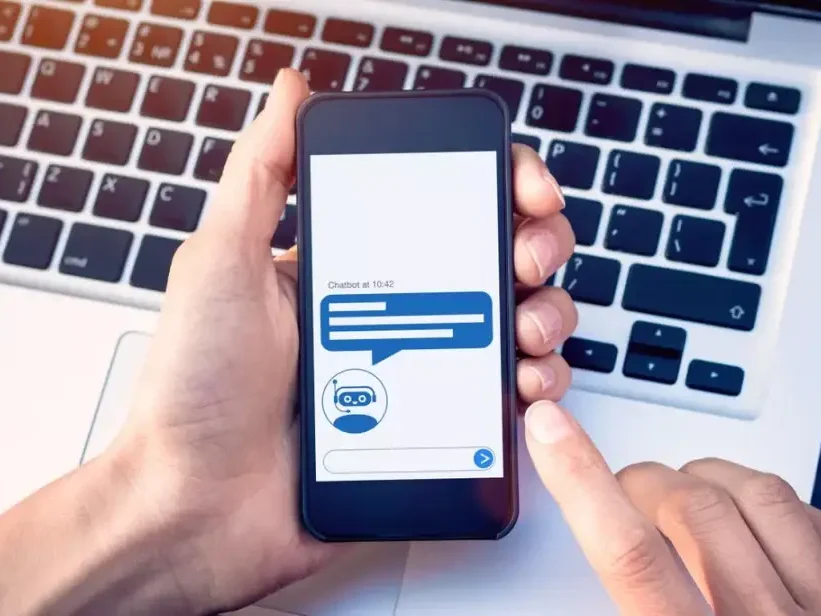Artificial intelligence in recruiting is one of the most significant trends in attracting talented employees. Such solutions drive candidate management and engagement, including chatbot technology.
Over the past few years, bots have become much more advanced as natural language processing improves. Much of the evolution is due to improved technology that may more naturally read and respond to candidates.
In addition, the growing popularity of products like Amazon Echo or Google Home shows people enjoy the convenience of chatbot technology.
What does a recruiting chatbot mean?
Chatbot for recruitment is an artificial intelligence AI-powered assistant that helps learn responsibilities, giving recruiters more time to focus on strategic human touch issues. Recruitment bots can be enabled through email, text, SMS, social media solutions, and other messaging apps.
Repetitive actions get in the way of many of the most time-consuming recruitment tasks that take valuable time from the recruiter. Recruiters spend over 80% of their time on low-value-added activities. These productivity issues and today’s rigid labor market rules force many organizations to seek alternatives to traditional manual recruitment methods. Chatbots are easily accessible and quickly increase business efficiency and productivity, making them the perfect companion for the busy recruiter.
Pre-selection, qualification, interview scheduling, and answering candidate questions (FAQs) are just some tasks a bot can free a recruiter from.
Benefits of engaging hiring chatbots
Incorporating a recruiting chatbot into your search and hiring process makes your job a lot easier, improving the overall experience for you and your candidates. We have collected a few main advantages of hiring bots:
- Speed up the recruitment process. On average, hiring managers spend 13 hours per week searching for candidates for a single position. It’s about 1.5 days out of a week spent searching for potential candidates and only 3.5 days connecting, attracting, and closing offers. Chatbots simplify this process by reducing your workload and speeding up time-consuming administrative tasks such as reviewing large volumes of resumes, contacting candidates, scheduling interviews, and booking interview rooms so you may make the most of your work week.
- Improving the quality of recruitment. Chatbots pre-screen candidates before you see them yourself, allowing you to sift through dozens of SVs and expand your funnel of qualified candidates – without having to look through resumes, job applications, or pick up the phone. The chatbot will approve only candidates with the right skills and experience.
- Rewarding a better candidate experience. Bots open up additional lines of communication. And because chatbots respond instantly, candidates won’t feel like they’re being harassed or that they’re sending their resumes into a black hole. It’s vital as 49% of all job seekers believe they didn’t get a job if they didn’t respond within two weeks of applying. In addition, 48% of all job seekers say waiting for a response is their #1 pain point in the hiring process.
Hiring chatbots remove human bias by relying on conversational cues to suggest candidates who fit your roles based on skills, experience, and qualifications rather than gender, age, and race. Thus, chatbots bring objectivity to the hiring process and ensure all candidates are treated equally.
Main difficulties with a chatbot in recruiting
Despite all these advantages, chatbots are not the ideal solution for your career website. They have several disadvantages you should be aware of before deciding to add them to your hiring workflow.
- Hiring chatbots can be frustrating for customers if they don’t know how to respond to a job seeker’s words. If your bot becomes confused or unresponsive, candidates may feel like they haven’t progressed anywhere. Negative experiences can be especially detrimental if the chatbot is your candidates’ first point of contact. It affects how candidates perceive your company and may make them disinterested in continuing the hiring process.
- Bots take your time and money. While bots pay off in the long run, they are a costly initial investment of time and money. Hours of work and testing are required to set up the technology and incorporate it into the hiring workflow. Bots can also be expensive to maintain: due to the learning curve, you may need a dedicated person to manage and support them.
- Chatbots cannot evaluate human qualities. Unlike human recruiters, chatbots cannot accurately assess personality traits, cultural fit, and work ethic – all factors important when identifying whether a candidate is a right fit for the company and the role.
Candidates who fit well with the corporate culture may go unnoticed because their years of experience don’t quite match the job listing. Or a chatbot might include candidates who don’t support the company’s core values on its list of best candidates. Generally, bots are not intelligent enough to automate the screening process, leaving recruiters with vital work.

Use cases of recruiting chatbots
The three most widely discussed ways to use a bot in recruiting are answering frequently asked questions, pre-screening candidates, and scheduling interviews. But there are other ways to use them that are less obvious. Here is a quick overview of the top reasons why your HR department needs a chatbot.
Answers to frequently asked questions
According to statistics compiled by Salesforce.com, just 38% of consumers want to interact with a person when interacting with a brand, and 69% of them prefer using bots because they quickly answer simple questions. Like in the customer service industry, job seekers prefer bots because they can quickly get basic information. Chatbot for recruitment are most often asked questions about job applications, position features, salary, and application status.
Automation of pre-screening and other processes
Your AI-enabled digital assistants may quickly pre-screen candidates based on job applications, resumes, other written materials, and video interviews submitted by applicants.
Your hiring staff may then focus on functions requiring human contact, including tracking down the most suitable candidates through live interviews conducted virtually via two-way video or in person.
Interview planning
You may also add an interview schedule to this process automation list. Companies need to make the most of their human resources staff by giving recruiters more time to work on finding and building relationships with in-demand talent.
Representing your brand
Don’t overlook the tremendous opportunity your hiring chatbot provides to create a shimmering halo around your brand. Brand reputation is essential to job seekers. According to Glassdoor, 39% of women consider a company’s brand a significant factor in their hiring decision, while 33% of men share the same view.
Liaising with applicants from start to finish
Potential candidates may be turned off if companies do not contact them as soon as possible. In one 2020 study, 52% of job seekers cited «lack of response from employers» as their biggest disappointment.
In fact, according to iCIMS, 76% of people say that not responding from an employer after applying is even more frustrating than not responding after a first date!
Candidate search
Chatbot for recruitment helps you find job candidates in a variety of ways. Recruiting bots can be a “soft” way to approach candidates who are not actively looking for a new job. Chatbots can also host online virtual job fairs, though recruiters can manage the conversations themselves.
Hiring chatbots is essential in improving the candidate experience, but the talent industry has gone far beyond using bots to communicate. Now artificial intelligence and machine learning are changing the industry. Rule-based onboarding, candidate scouting, interview scheduling, and recruitment are being automated to allow talent acquisition specialists to spend more time with top candidates and critical talent acquisition features, including creative and strategic thinking.
In addition to these changes, candidates may soon be able to interact with chatbots primarily through voice, such as Apple’s Siri or Amazon’s Alexa, rather than through text.
